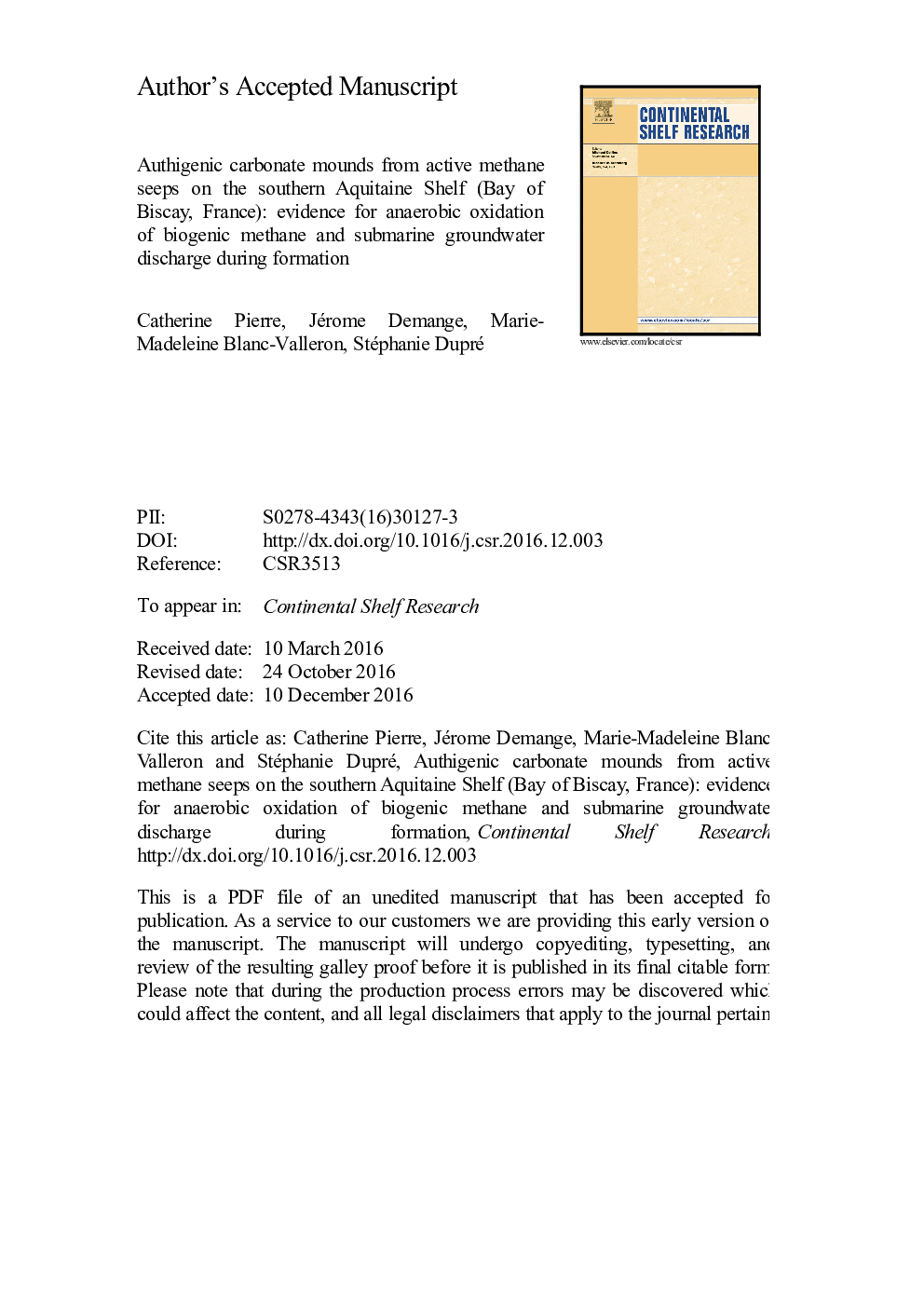| Article ID | Journal | Published Year | Pages | File Type |
|---|---|---|---|---|
| 5764516 | Continental Shelf Research | 2017 | 36 Pages |
Abstract
The widespread methane emissions that were discovered in 2013 on the Aquitaine Shelf at water depth between 140 and 220 m are associated with authigenic carbonate crusts that cover meter-high subcircular reliefs of 10-100 m in diameter. These authigenic carbonates are primarily aragonite plus calcite and dolomite, which cement the fine- to medium-grained sandy sediment. The carbonate cement is often pierced by numerous circular cavities of 5-10 µm in diameter that are considered to be moulds of gas bubbles. Conversely, micron-sized cavities in the aragonite crystals are attributed to dissolution features, in relation to the production of CO2 during the aerobic oxidation of methane. The oxygen isotopic compositions of bulk carbonate (+1.7 to +3.7â°) and aragonite cements obtained from microsampling (â0.1 to +1.4â°) indicate that these carbonates were precipitated in mixtures of seawater and freshwater, i.e., in the context of submarine groundwater discharge at the seafloor. The carbon isotopic compositions of authigenic carbonates (â51.9 to â38.1â°) and of aragonite cements (â49.9 to â29.3â°) show that the dissolved inorganic carbon of pore fluids was mostly produced by the anaerobic oxidation of biogenic methane and also partly from the groundwater system.
Keywords
Related Topics
Physical Sciences and Engineering
Earth and Planetary Sciences
Geology
Authors
Catherine Pierre, Jérome Demange, Marie-Madeleine Blanc-Valleron, Stéphanie Dupré,
